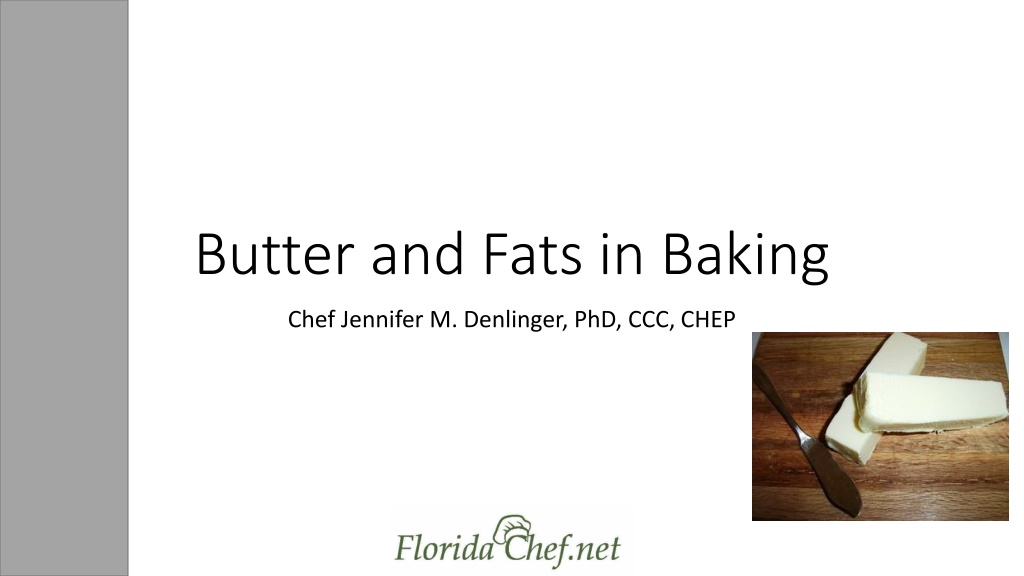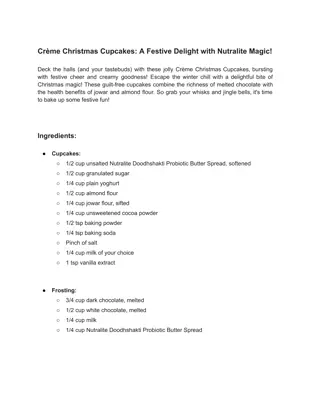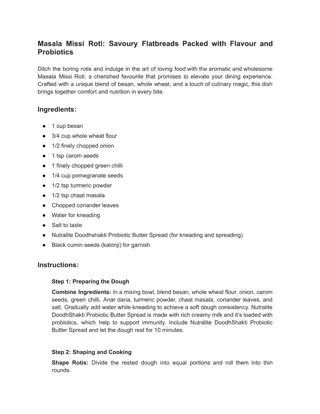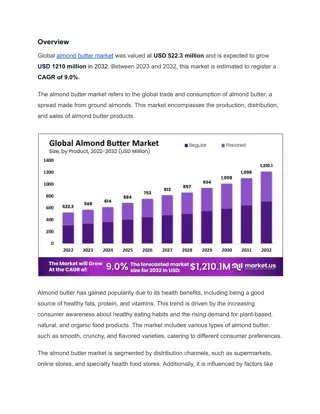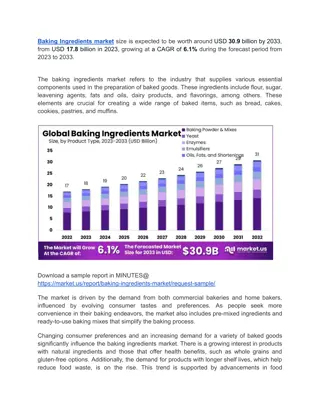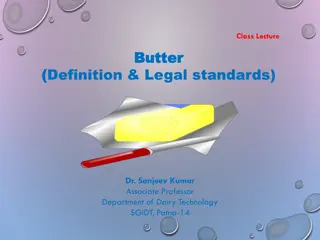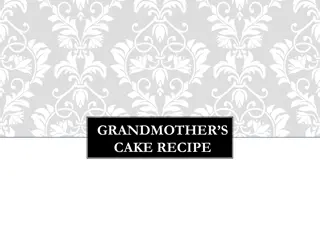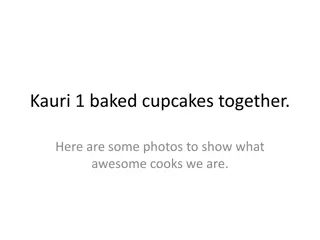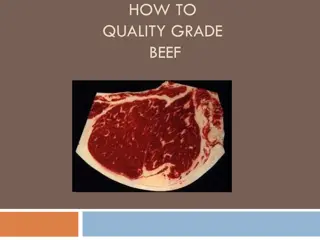Understanding Butter: Grades, Standards, and Usage in Baking
Uncover the nuances of butter in baking, from its definitions to grading standards and optimal usage temperatures. Learn about the different grades of butter, varying fat contents, and key characteristics that affect its quality. Discover the importance of butter's composition in creating baked goods and how to best utilize it in your culinary creations.
Download Presentation

Please find below an Image/Link to download the presentation.
The content on the website is provided AS IS for your information and personal use only. It may not be sold, licensed, or shared on other websites without obtaining consent from the author. Download presentation by click this link. If you encounter any issues during the download, it is possible that the publisher has removed the file from their server.
E N D
Presentation Transcript
Butter and Fats in Baking Chef Jennifer M. Denlinger, PhD, CCC, CHEP
Objectives Learn by tasting the difference between different styles of butter List various temperature that butter changes form Define the different grades of butter Identify the characteristics of a well baked biscuit
Fats in baking To tenderize the product and soften the texture Shortening shortens gluten strands Add moisture and richness Increase keeping qualities Add flavor Assist in leavening creaming method, biscuit method, lamination
Butter Butter can be defined as over whipped or churned cream into a solid fat. Must contain a minimum of 80% milk fat and 2% milk solids. The globules of fat in the cream are surrounded by a phospholipid membrane, which allows the membrane to float in water. Agitation causes the membranes to break and clump together with water and other intact fat molecules. Creates butter The remaining liquid is the buttermilk. Originally fermented to use in baking It takes 2 quarts of raw milk, separated into cream, to produce 1 pound of butter.
Butter Standards Minimum butterfat amount in US and Canada is 80% 15% water, 5% milk solids and salt European Butter ranges from 82 86% butterfat "Light" butter contains 1/2 the calories, no more than 50% of the fat content, 46% less cholesterol, and 25% less salt Sweet Cream Butter has not been salted Salted butter has up 2.5% of salt
Butter Grades Graded by the USDA into AA, A and B Graded according to it's color, texture, taste, and fat levels. Sometimes an artificial coloring with the name of Annatto may be added. AA is the highest quality butter. It is given to butters that have received a score 93-100. A is just slightly less good, receiving a score of 92 or better Grade B is given to scores between 90 or better and is used for baking Although butter is regulated, good, fresh taste can not be guaranteed. An ideal unsalted butter should have a clean taste, free of any off flavors, delicate smooth flavor, and a waxy smooth texture. There are many different things that could affect the quality of butter. Tempering of the cream could affect the color and texture. The diet of the cows also affects the quality of the cream used to make butter. In the summer, a yellowish butter is produced. In the winter, a whiter one.
How to use butter Melting point is around 95 F Smoke Point- up to 350 F Best working temperature is between 65 70 F Too cold at 50 F and too soft at 80 F It should be stored under refrigeration with the temperature of 32 F to 35 F. It is best kept frozen. To clarify butter, melt whole, unsalted butter. Remove the water and milk solids by skimming them off the top. Do not boil, or it may scorch. Clarifying butter makes it more stable, consistent, and richer. Similar to clarified butter is ghee. It is clarified butter that has begun to brown. This raises the smoke point to 375 F. It originated in the region of India.
Butter history In ancient times, butter was used in religious ceremonies, and as a medicine. In Greek and Roman cultures, it was not cooked, but only used as a medicine. Not introduced to Italy or France until the 15th century. Butter is usually produced from cow milk, but can also be made from goats, donkeys, horses, buffaloes, or camels.
Other Types of Fat Margarine- most made entirely from hydrogenated vegetable oils, with added skim milk or whey solids Melting Point-94 -98 F Smoke Point- 356 -370 F Lard- Most is rendered (melted and clarified) from pork trimmings 100% fat Melting Point- 95 -113 F Smoke Point- 360 -375 F
More Fat Suet- Fat from the area around the kidneys of cows and sheep Melting Point- 113 -122 F Smoke Point- 400 F Vegetable Shortening- made from 100% vegetable oils, hydrogenated chemically treated to change some of the polyunsaturated fatty acids to saturated fatty acids, this makes the fat solid at room temp Melting Point- 115 -119 F Smoke Point- 325-375 F
And more fats Oils Liquid fats that come primarily from plants: seeds, nuts and vegetables All contain the same amount of fat per tablespoon, however they vary greatly in percentage of saturated fat. Coconut oil = 92% saturated fat Canola = oil 7.6% saturated fat The name "canola" was derived from "Canadian oil, low acid it is produced from the rapeseed
Storage Butter is very susceptible to picking up odors and to oxidation, so it should be kept in an airtight container. Butter should only be kept in the refrigerator for 2 or 3 weeks maximum. It is good in the freezer if kept in an airtight container for several months.
Review Does sweet cream butter have sugar in it? What is different between American butter and European style butter? What are the 3 grades of butter? List some pros and cons of using different fats in baking. Explain what buttermilk is?
